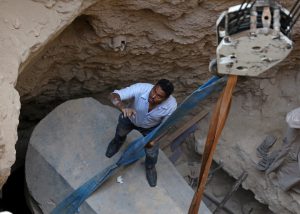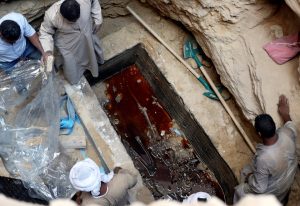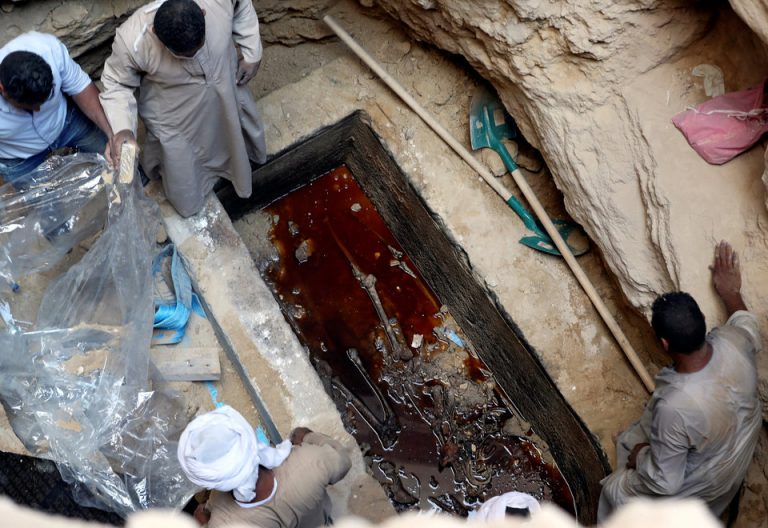Egyptian archaeologists on Wednesday pried open a mysterious, 30-ton black sarcophagus, where they found three skeletons — and one that suffered a blow to the skull.
Legends abounded about the sarcophagus, which was first found over 16 feet below ground by construction workers in a residential area of Alexandria earlier this month. Some observers thought it may contain the corpse of Alexander the Great, as the sarcophagus dates back to the early Ptolemaic period, or around 323 B.C., which began following Alexander’s death.

Despite warnings of an ancient curse to those who would open the 2,000-year-old sarcophagus, archaeologists went ahead on Wednesday, enlisting the help of Egyptian military engineers.
“The sarcophagus has been opened, but we have not been hit by a curse,” Mostafa Waziri, secretary general of Egypt’s Supreme Council of Antiquities, told Egypt Today, which published live updates of the sarcophagus opening.
Waziri added that the sarcophagus is unusual for its size; it’s the largest to ever be discovered in Alexandria.
What the archaeologists found inside the sarcophagus was grisly — but was not the Earth-shattering discovery some had hoped.

The three skeletons found in the sarcophagus were likely soldiers, according to Egypt’s Ministry of Antiquities, with one of the skeleton’s skulls showing signs of skull fractures caused by a sharp instrument.
Beyond the skeletons, the sarcophagus was inundated with sewage water, which accelerated the decomposition of the skeletons.
The skulls will be further analyzed to understand their age and cause of death.
Alexandria was the capital of Ptolemaic Egypt after Alexander’s army conquered the region and deposed the old pharoahs. The Ptolemaic dynasty famously ended with Cleopatra’s suicide during the Roman conquest of Greece and Egypt around 30 B.C.
Source: businessinsider
Ask me anything
Explore related questions





